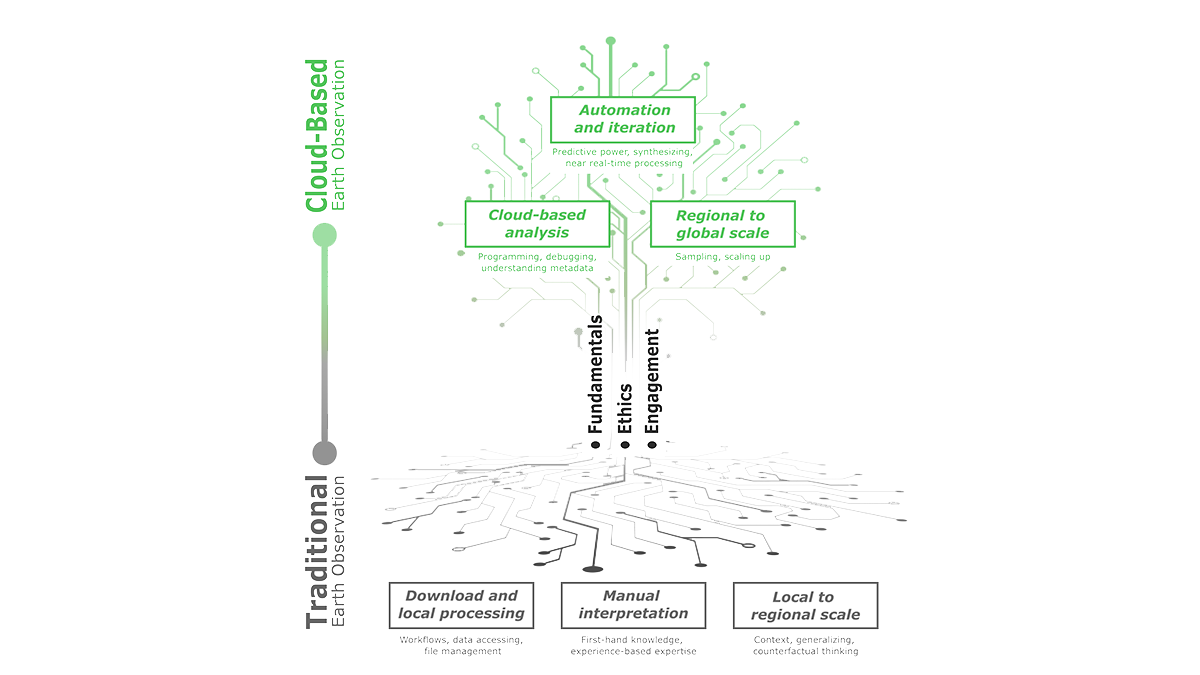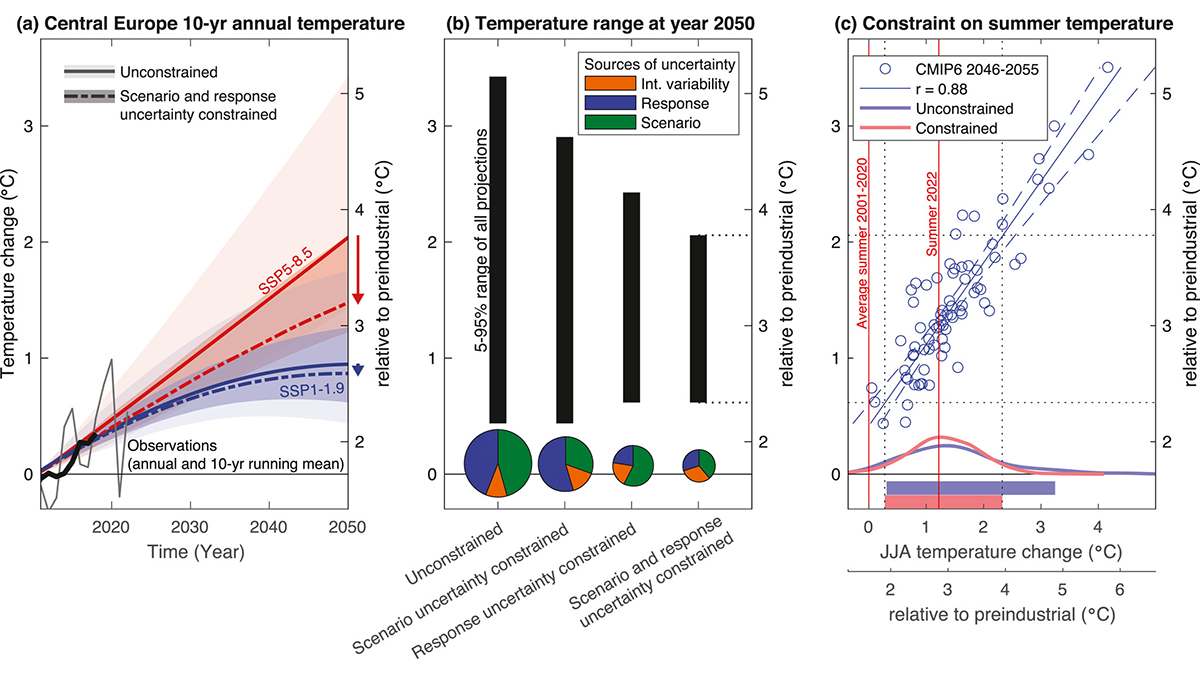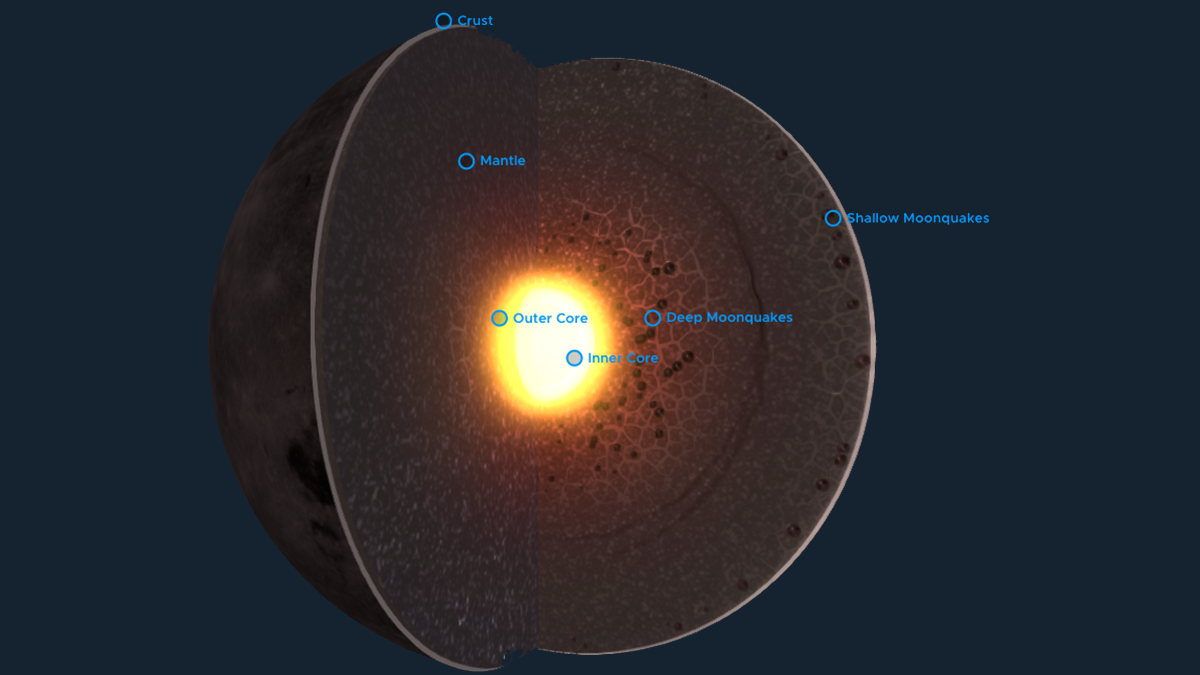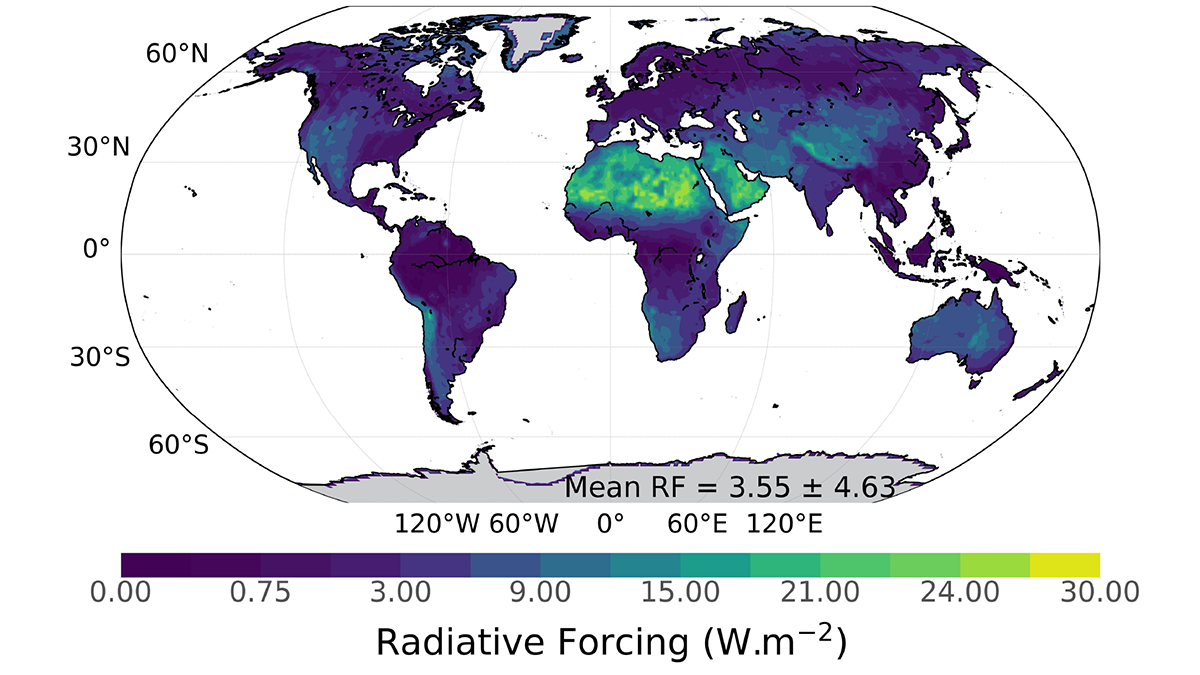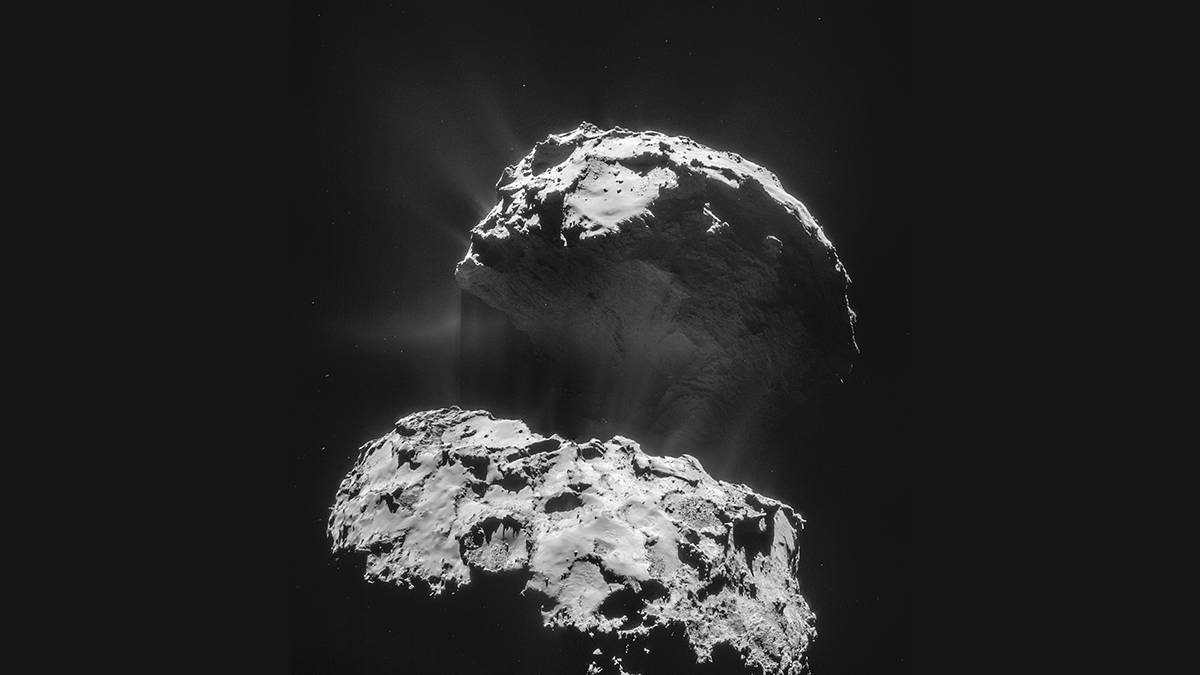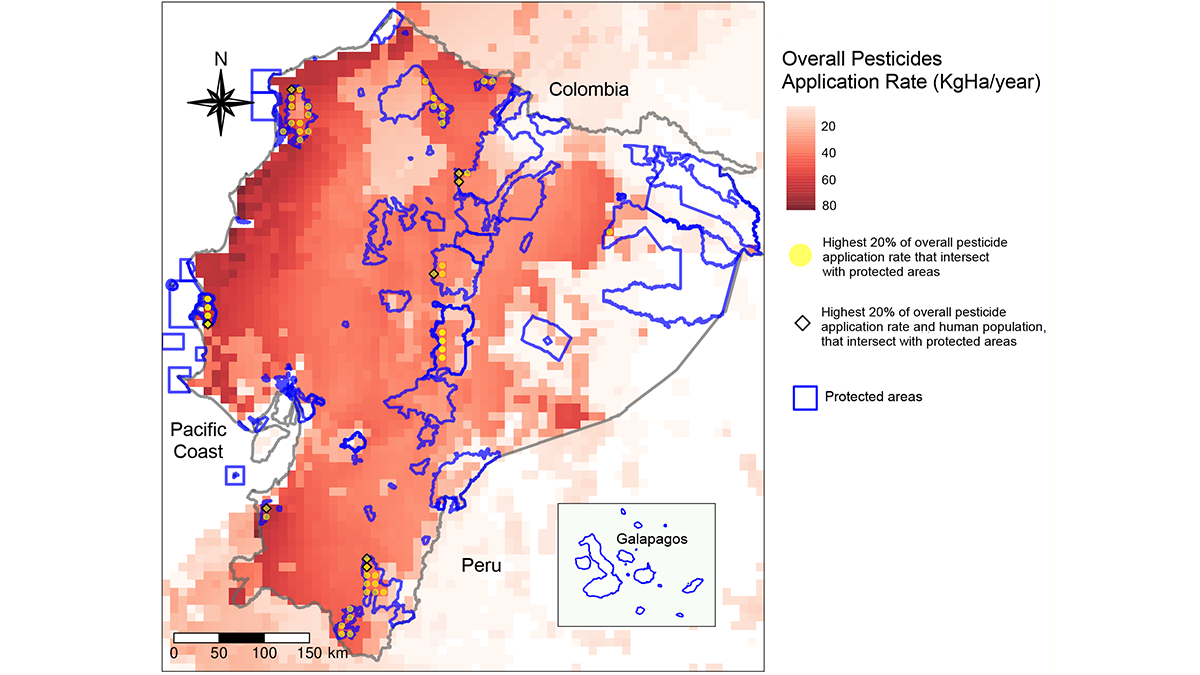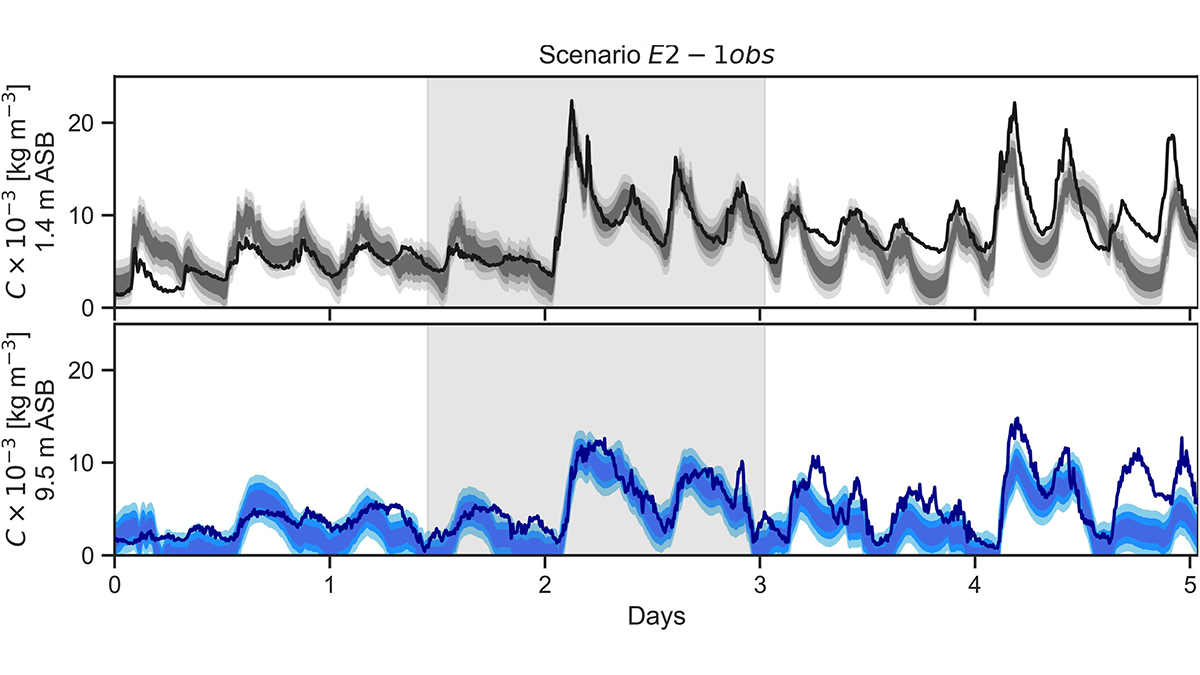Cloud-based Earth Observation offers unique opportunities for education, but leveraging this requires new teaching methods that emphasize technical fundamentals, ethics, and stakeholder engagement.
Editors’ Highlights
How Much Terrestrial Precipitation is Used by Vegetation?
Precipitation is partly used by vegetation and partly transformed into river flow. Quantifying the amount of water that is directly used by vegetation is essential to decipher climate change’s impact.
Constraints Can Reduce Regional Climate Projection Uncertainty
Climate projections are uncertain because we don’t exactly know how the climate system responds to human actions, but combining interdisciplinary results can reduce uncertainty in future planning.
A Mystery About the Moon’s Deep Interior Endures
Geophysical data has suggested that the base of the Moon’s mantle is partially molten or contains ilmenite, but an improved rheology model puts the existence of this layer in doubt.
An Open and Inexpensive ‘Fluxbot’ for Measuring Soil Respiration
An inexpensive system of automated gas sensors and open-source software, tested in a Kenyan savanna, will help democratize and expand science research on soil respiration.
Sensing the Color of Soil for Climate Modeling
The color of soil reflecting the Sun’s rays affects the Earth’s climate and water cycle. Using satellite data that senses many wavelengths improves soil reflectivity estimates, especially in deserts.
Dancing Dust on Comet 67P/Churyumov-Gerasimenko
Cometary activity moves sediments over the surface of 67P/Churyumov-Gerasimenko, with long-term sinks near the poles of the comet.
Mapeo de la convergencia entre pobladores, pesticidas y áreas protegidas
La exposición a pesticidas puede afectar la salud humana y de los ecosistemas. Una investigación reciente aplica modelos cartográficos en Ecuador, los cuales pueden ser exportados a otras escalas para limitar estos impactos adversos en otras regiones.
Mapping Intersections of Pesticides, Protected Areas, and People
Pesticide exposures can impact human and ecosystem health, and new research uses a modeling approach applied to Ecuador that can be scaled and exported to limit negative impacts in other regions.
Using Bayesian Inference to Improve Sediment-Transport Models
A new Bayesian approach is used for the estimation and uncertainty quantification of unobservable parameters required to model tracer evolution in ocean sediment transport and tracer concentrations.

